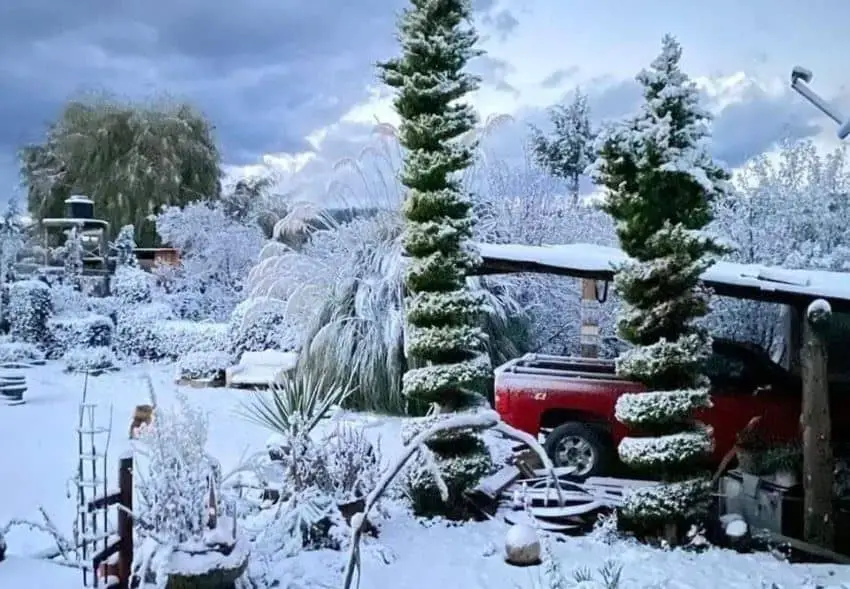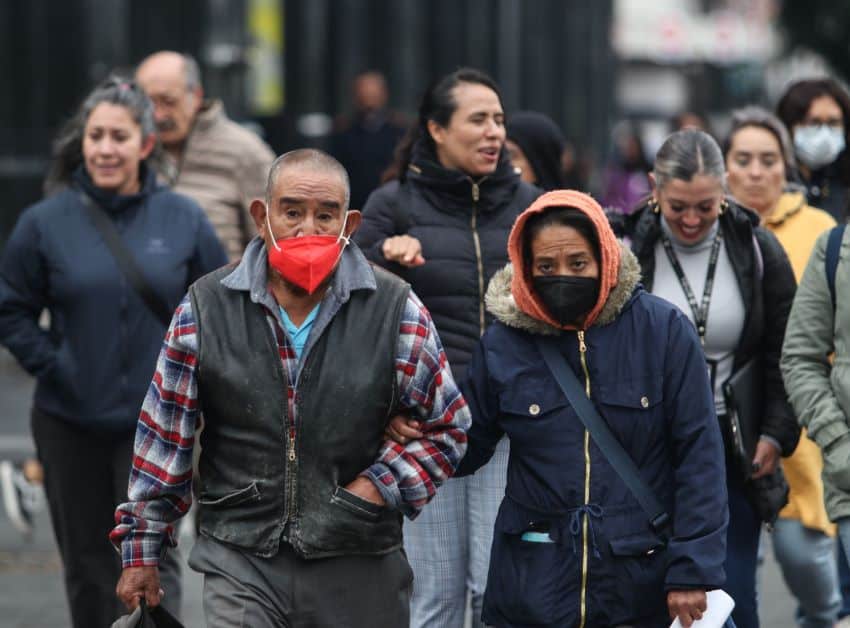Cold front number 11 has brought low temperatures and precipitation, resulting in some snowy landscapes in various regions of Mexico, particularly in the north.
Residents of these regions took to social media and shared photos of snow-covered areas in their communities.

On Wednesday morning, the National Meteorological System (SNM) reported that the first winter storm in the northern plateau would bring rain or snowfall to the mountainous regions of Chihuahua, Coahuila, Nuevo León, San Luis Potosí, Zacatecas and Durango.
Frigid temperatures in high-altitude areas of the northwest, north, northeast, east and center of Mexico are also expected due to the polar air mass associated with the cold front.
In the mountains of Chihuahua, Durango and Sonora, the SNM has forecast frost and temperatures oscillating between -10 and -5 degrees Celsius.
High altitude areas of Baja California, Coahuila, México state, Guanajuato, Hidalgo, Nuevo León, Puebla, Querétaro, San Luis Potosí, Sinaloa, Tamaulipas and Zacatecas can expect temperatures between -5 to 0 degrees Celsius, while some regions of Aguascalientes, Jalisco, Michoacán, Morelos, Oaxaca, Tlaxcala and Veracruz will see minimum temperatures ranging between to 0 to 5 degrees Celsius.

Mexico City will see minimum temperatures of 6 to 8 degrees Celsius and maximums of 20 to 22 degrees, while México state can expect minimum temperatures of 5 to 7 degrees Celsius and maximums of 18 to 20.
Campeche, Quintana Roo, and Yucatán can expect normal temperatures ranging from 35 to 40 degrees Celsius; Guerrero, Chiapas and Oaxaca will feel slightly cooler at 30 to 35 degrees.
The low-pressure system will extend from the northeast of the Gulf of Mexico to the country’s southeast, interacting with other low-pressure channels in Mexico. Torrential rains are predicted in Chiapas, Tabasco, Veracruz and Oaxaca, while heavy rains are forecast for Jalisco, Colima, Michoacán, Guerrero and Campeche.
Likewise, high humidity levels will increase the likelihood of snow or sleet in mountainous areas with elevations above 4,200 meters. Some of the possibly affected areas are: Nevado de Toluca, Popocatépetl, Iztaccíhuatl, Sierra Negra, La Malinche, Cofre de Perote and Pico de Orizaba.
With reports from El Universal, Milenio and Conagua
